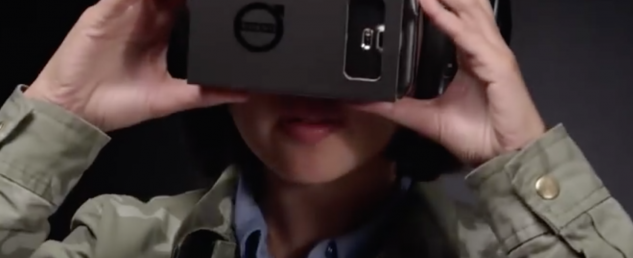La chronique de Mark Tungate: The future is virtual
Why advertising has embraced an alternative reality. When Google Cardboard won the Grand Prix in the Mobile category at Cannes, it confirmed what a lot of agency people already knew: virtual reality is the new big thing in advertising. In case you’ve been hiding in a cave – or too busy watching your old-fashioned 2D TV – Google Cardboard is a stereoscopic 3D viewing device made out of…well, cardboard. You order it online, it arrives flat-packed, and after assembly you find yourself holding a cheap VR viewer that works with your smartphone and a number of apps. Google Cardboard is a product, not a campaign, which made it an odd choice of Cannes winner. But the Mobile jury described it as “an enabler”, which had made several campaigns possible. Among these, “Volvo Reality”, a collaboration between the US agency R/GA and visual effects house Framestore, which put Google Cardboard users behind the wheel of the new XC90 car. One of the problems agencies faced at Cannes was finding an appropriate category for VR work. That same week, the Epica Awards – an advertising competition judged by the industry press – announced the first ever VR category in any awards show. Google Cardboard is merely the tip of the iceberg. It’s a cut-price version of a far more sophisticated VR headset, the Oculus Rift, acquired by Facebook last year. To say there’s been a lot of buzz about the device is an understatement – and it won’t be commercially available until 2016. We don’t even know how much they’ll cost, but estimates range from $200 to $300 (€180-€280). The opportunities for the auto and tourism industries in the VR space seem obvious. Tour operator Thomas Cook has placed VR headsets in a number of agencies so users can explore its hotels. This ‘try before you buy’ strategy is likely to become widespread, as an operation by Neilsen Active Holidays in the UK suggests. If VR can help consumers experience a vacation, maybe it can take them to their perfect home. In France, home improvements company Point P – with the aid of Havas 360 – used the Oculus Rift to help consumers to see into the future. Because virtual reality offers immersive experience, it can take users to places that they would never normally have the chance to visit. Leo Burnett Sydney played on this idea with its “Shark Diving in the Desert” operation, to promote Samsung’s Gear VR player. In short, it brought the ocean to the Outback. In a similar but even more moving project, Google Creative Labs deployed Google Cardboard at schools to bring the world into the classroom. When you can take a virtual trip to Verona, the home of Romeo & Juliet, lessons take on a whole new dimension. That’s the educational side – but there’s a consumer aspect too. Virtual reality could make the online shopping experience far more entertaining. Imagine touring a virtual store and selecting items, putting them into a basket for later purchase. Some brands, inevitably, have used VR as a source of humour. Laugh if you wish, but according to a recent article in Advertising Age, Gartner Group predicts 25 million virtual or more limited augmented-reality combined headsets will be in consumer hands globally by 2018. As the science fiction writer William Gibson famously noted: the future is already here, it’s just not widely distributed yet. Mark Tungate is editorial director of The Epica Awards and author of several books about advertising and branding.



